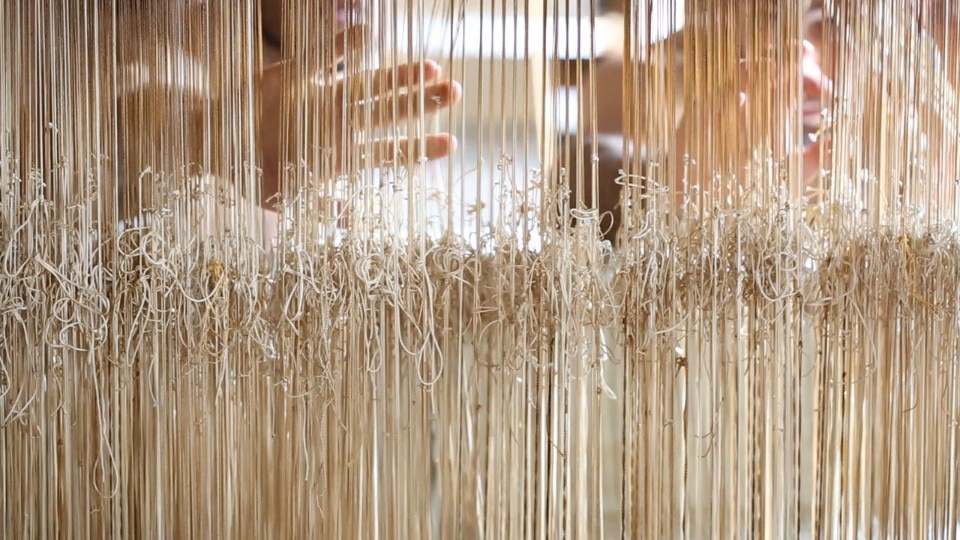
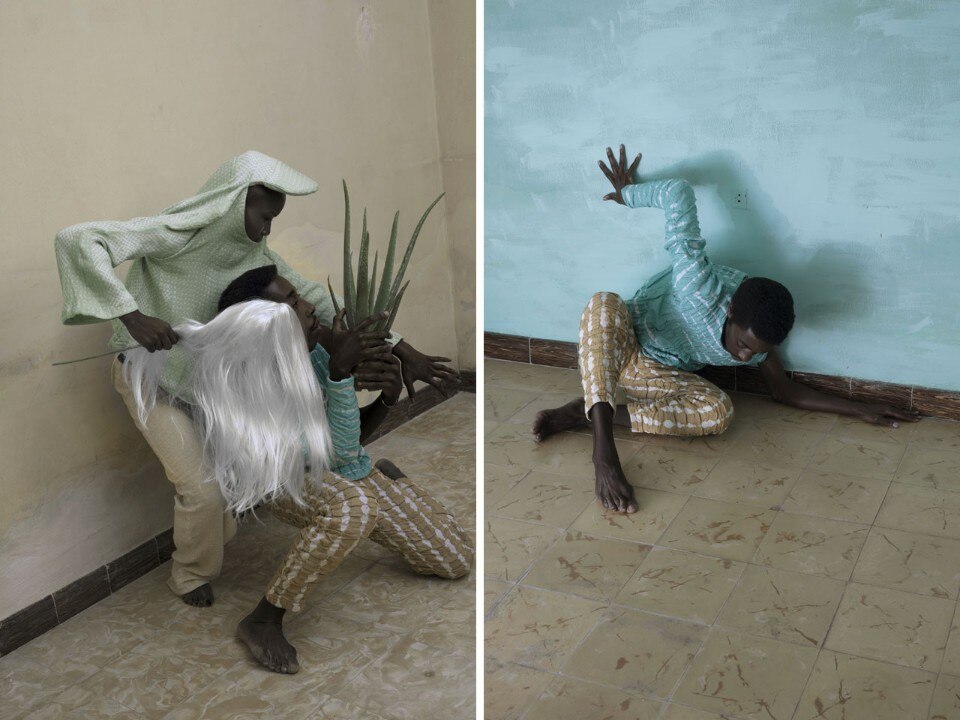
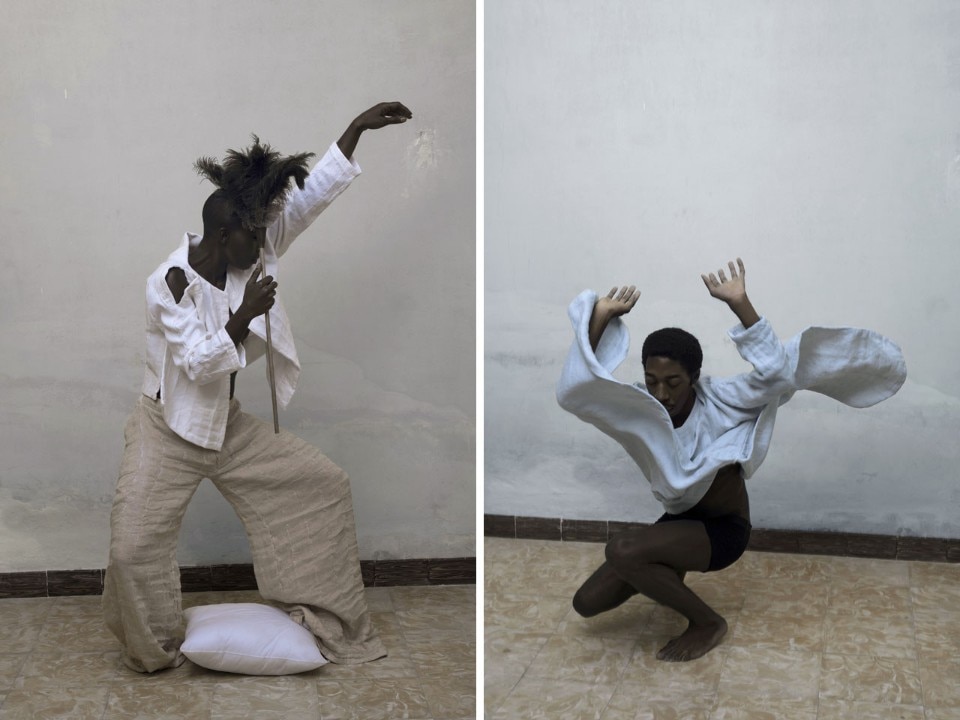
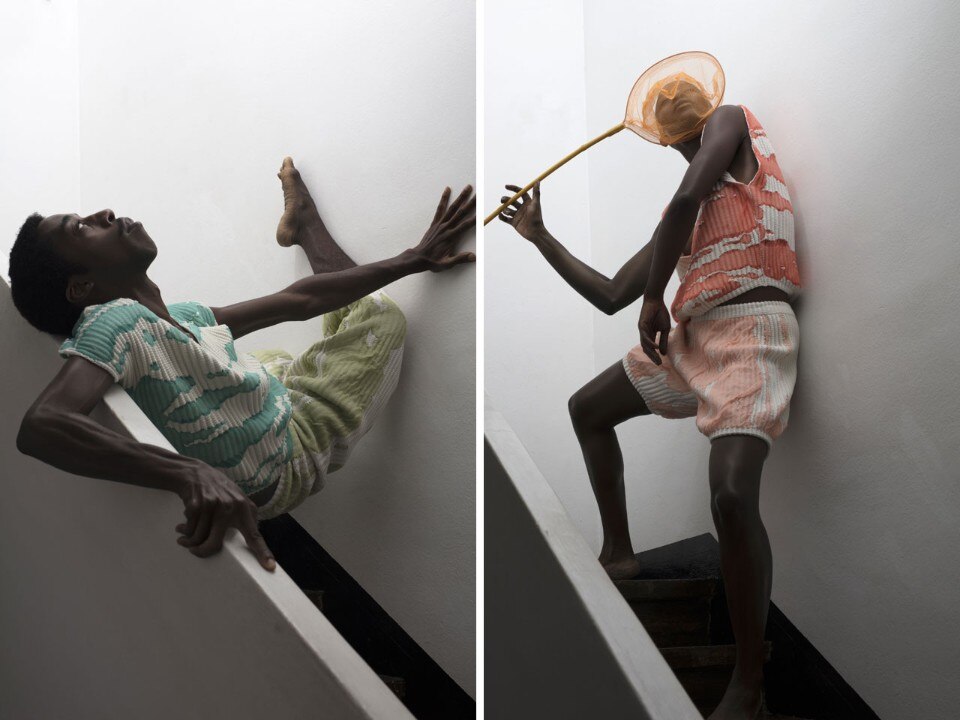
The De-Formance film brings the viewer through the design process and research, beginning with the body’s “birth” and discovery of the effect of its movement. Through movement, we see how designs are created and how those same designs then further affect continued movements.
Original movement sequences for this project were developed earlier this year in collaboration with choreographer Heidi Vierthaler and dancers Luca Cacitti and Shay Partush. Using Vierthaler’s somatic method of movement (Stream-Flow®) loose themes such as risk and vulnerability became starting points for movement. A custom software, developed in collaboration with Lionel Ringenbach then interpreted the muscle energy of the dancers. After capturing the data from the final choreographed sequences, costume shapes, textures and colours were developed specific to each sequence, in cooperation with the TextielLab at the TextielMuseum in Tilburg. During the filming, the dancers reinterpreted the original choreographed sequences, while also developing new movements in response to the costume.
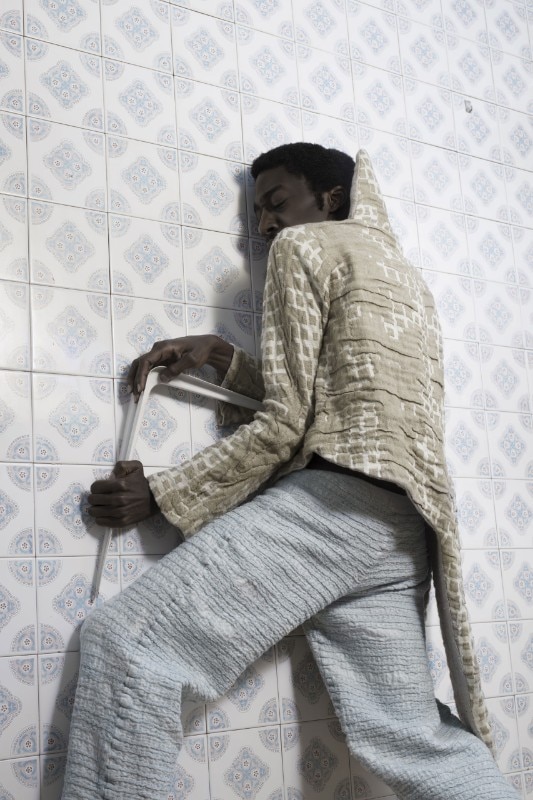
Each stage of this project has been an evolution from movement (dance) to design (costumes) to further movement (film and live performance) to further design and movement (photographic styling and narrative).
During Dutch Design Week at the Piet Hein Eek gallery, live performances on opening and closing weekend allow visitors to witness the interpretation of movement as inspired by the costume artefacts. The De-Formance film is shown all week and guides the viewer through the intended narrative by providing strong, associative scenery, enhanced through lighting, angles, space and sound. In this film, we see the evolution of textile making from the body to the machine into digital interpretation, and an ultimate return to the body as a source for knowledge and design input.
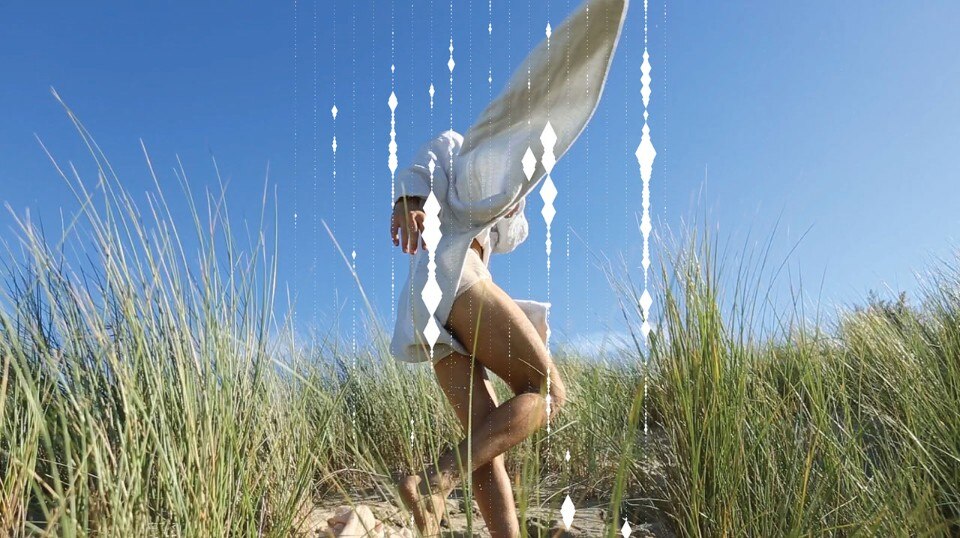
De-Formance
Piet Hein Eeek Gallery
Concept, Project Development and Design: Jessica Smarsch
Choreography and Development: Heidi Vierthaler
Software Development and Animation: Lionel Ringenbach
Dance and Choreography Collaboration: Luca Cacitti and Shay Partush
Photography Direction (Film): Fleur Boonman
Photography: Lisa Klappe

